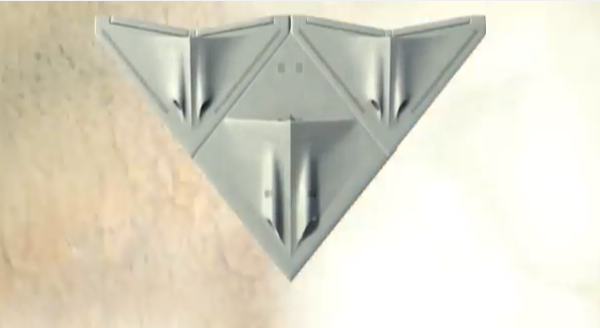Scientists and engineers at BAE Systems have released some interesting details about some futuristic technologies that could be operative by 2040. Or earlier.
BAE Systems has been studying futuristic aircraft shapes for quite some time.
The projects the British Defense company is working on were recently unveiled through a series of animations which show how civil and military aviation of the future could be based on 3D printers capable to print UAVs on-the-fly during a mission; aircraft that can heal themselves; a Transformer long range aircraft which splits into a number of smaller aircraft when it reaches its target, and a directed energy weapon that could engage missiles at the speed of light.
The Transformer is a flexible aircraft system that combines smaller jets: it’s a sort of mothership made of smaller sub-aircraft which can be combined together to increase the range, reduce the overall aerodynamic drag and save fuel during the transit to the area of operations.
Once the mothership has reached the target area, each single craft can split off to conduct its specific mission: attack, surveillance, airdrop to name but few.
The Survivor technology will be used to develop new aircraft and give them the possibility repair any damage sustained during the mission in flight.
The self-healing technology could improve survivability of the aircraft employed in high lethality scenarios. It is based on advanced materials: “a lightweight adhesive fluid inside a pattern of carbon nanotubes from which the aircraft is constructed and is released when damaged to quickly ‘set’ mid-flight and heal any damage,” according to BAE Systems.
Directed Energy Systems (something that has been studied in the U.S. for a long time) is instead an on board weapon used to concentrate a low cost beam of energy at the speed of light against enemy aircraft, weapons (missiles, mortars, projecticles). In other words, it could be a laser cannon, used to hit and destroy ground and air targets with much accuracy.
Furthermore, BAE Systems foresees the use of hi-tech on-board 3D Printers that, via Additive Layer Manufacturing and robotic assembly techniques, could be used to create small unmanned aircraft on-the-fly, based on the inputs sent by a human operator from the ground control station. Needless to say, such a way to create drones could be useful in various types of mission, including air strike, surveillance or SAR (Search And Rescue) operations, during which drone copters could be created to rescue and recover single civilians or soldiers.
Even more interestingly, “after use the UAVs could render themselves useless through dissolving circuit boards or they might safely land in a recoverable position if re-use was required,” in order to prevent capture.
Even if these concepts may seem a bit futuristic and remind Terminator or Transformer movies, they will probably be the base of the future aerial warfare.
















